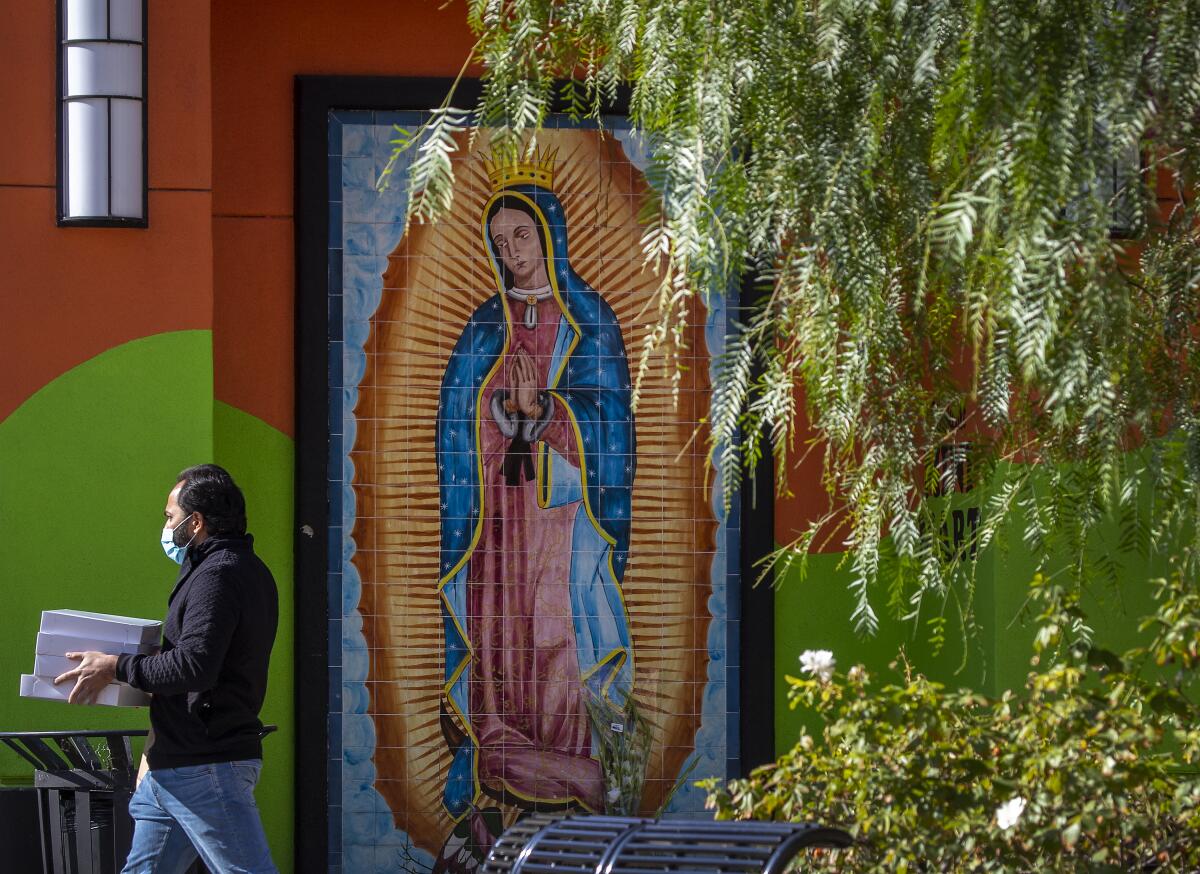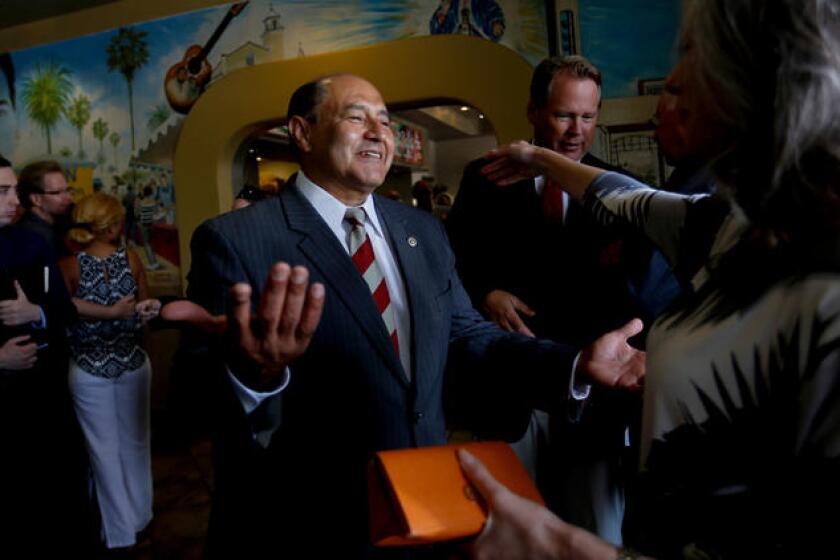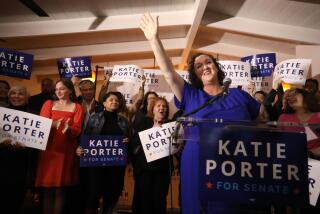O.C. supervisors set to approve majority Latino district amid allegations of gerrymandering

The Orange County Board of Supervisors appears poised to select a map that creates a majority Latino district for the first time while also giving influence to Asian voters as a once-in-a-decade redistricting process moves closer to completion.
The lines for the supervisors’ districts have long been drawn in a way that makes it hard for Latinos to be elected. It has been 15 years since there was a Latino representative on the five-member board.
The board on Tuesday whittled down its options to five proposals, based on two primary maps.
Even as all five proposals create a majority Latino district, some of them prompted allegations of gerrymandering to shut out Democrats.
Unlike in Los Angeles County, which has delegated this year’s redistricting to an independent commission, the Orange County supervisors themselves will have the final say on the outlines of the districts they will represent if they seek reelection.
The first primary map, dubbed Proposal 4C1, was drawn by Supervisor Andrew Do, a Republican who is Vietnamese American, and creates a district that has nearly 53% Latinos of voting age, including portions of Anaheim, Garden Grove, Orange and Santa Ana. The map also creates a district with about 28% Asian voters.
The second map, 5A1, creates a district with 52% Latinos of voting age, including all of Santa Ana and portions of Anaheim, Garden Grove, Tustin and Orange.
That map, which also creates an “influence district” with nearly 30% Asian voters, was drawn by Supervisor Doug Chaffee, one of two Democrats on the majority Republican board.
Chaffee based his map on a proposal from the Orange County Civic Engagement Table, which aims to promote civic engagement in communities of color and includes Asian American, Pacific Islander, Latino, labor and environmental advocates.
Nearly one-third of Orange County residents are Latino, but the powerful Board of Supervisors has not had a Latino member in 15 years.
The biggest difference between the two primary maps is how much of inland south Orange County, which typically leans conservative, is lumped into a coastal district and where Costa Mesa, currently represented by Supervisor Katrina Foley, falls.
Foley, a Democrat, took issue with the map separating Costa Mesa, where she lives, from its neighbor Newport Beach and lumping it with the Asian influence district.
Both Chaffee and Foley are white.
Costa Mesa and Newport Beach share a school district, a homeless shelter and similar community concerns. The two cities have not been separated into different districts in the county’s history, she said.
“It’s hard for me to sit here and not feel that this is political targeting,” she said. “Under the California Fair Maps Act, one of the criterion is that you cannot politically target even a person that is on the dais.”
Dozens of speakers filed into the county’s chambers Tuesday.
“It is very important to me, the redistricting issue which could affect my community for the next 10 years,” Fullerton resident Alma Chavez said in Spanish, voicing her support for variations of the Orange County Civic Engagement Table proposal that did not move forward. “I support these proposals because they represent all the communities, especially the Latin community in Santa Ana but also in the surrounding cities which could be the most affected ones.”
Supervisors spent more than an hour on Tuesday debating various changes to Do’s proposal, eventually directing staff to come back with four versions of that map.
The county went against the recall effort by 52% to 48% — a narrower margin than Newsom’s overwhelming statewide victory but still a significant result in the former conservative bastion.
Orange County hasn’t been majority white in nearly 20 years and has become increasingly politically diverse. The county, once a bastion of conservatism, has turned purple, voting against Donald Trump twice and against the recall of Gov. Gavin Newsom in September. Its population is 38% white, 34% Latino and 22% Asian.
Julia Gomez, a staff attorney with the ACLU, said many of the proposals, including map 4C1 that the board ultimately advanced, create a partisan advantage for Republican voters in three of the five districts, despite the GOP party registration in the country trending downward.
“The Fair Maps Act explicitly prohibits partisan gerrymandering and provides that the board ... shall not adopt supervisorial district boundaries for the purpose of favoring or discriminating against a political party,” she said.
More to Read
Start your day right
Sign up for Essential California for news, features and recommendations from the L.A. Times and beyond in your inbox six days a week.
You may occasionally receive promotional content from the Los Angeles Times.









